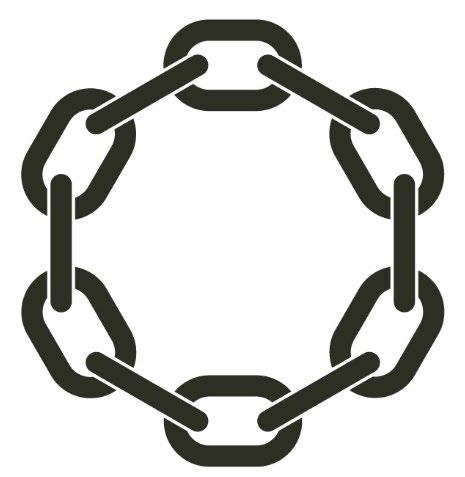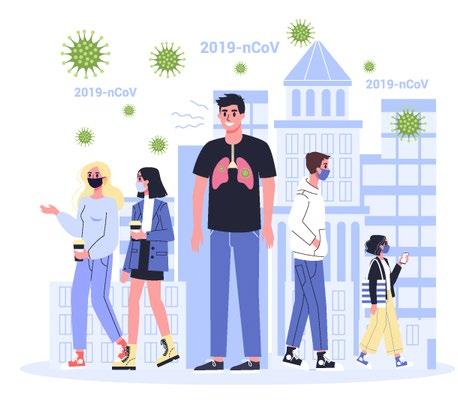Learner Workbook
UIP1 – Infection prevention (COVID-19) for Hairdressing and Barbering Services

This workbook can help you to prepare for assessment for the following unit:
UIP1 - Learning Outcomes
Learners will:
1. Understand the causes, transmission and effects of COVID-19
2. Understand social responsibility for the hair and barbering sector in relation to COVID19

3. Understand the controls necessary to prevent the spread of COVID-19
4. Understand the importance of Personal Protective Equipment (PPE), hand hygiene and personal hygiene in the prevention of COVID-19
5. Understand potential hazards and risks and the workplace procedures necessary to prevent the spread of COVID-19 in the salon/barbershop
6. Understand decontamination and waste management processes relevant to hairdressing and barbering services
AC mapped
Learner name:
© VTCT July 2020 Learner Workbook_UIP1_v1.0 Page 1 of 24 If printed this document becomes uncontrolled
Please provide detailed answers to all the questions in this workbook.
Sources of information and guidance for the potential answers include:
• The unit specification
• The PowerPoint presentation
• Other relevant and credible information sources, e.g. textbooks, government and public health websites of the country therein, professional journals and associations
© VTCT July 2020

Learner Workbook_UIP1_v1.0 Page 2 of 24 If printed this document becomes uncontrolled
Introduction
LO1 – Understand the causes, transmission and effects of COVID-19

1. Describe the following. (AC 1.1)
Description
Conditions required for the spread of infection
Possible sources of infection
Cross-infection
Routes of transmission
Routes of infection
- general
Routes of infection – COVID-19
© VTCT July 2020 Learner Workbook_UIP1_v1.0 Page 3 of 24 If printed this document becomes uncontrolled
2. What is the ‘Chain of Infection’? (AC1.2)
Description

Chain of Infection
3. Label the diagram to identify the stages in the chain of infection. (AC 1.2)

Workbook_UIP1_v1.0 Page 4 of 24 If printed this document becomes uncontrolled
© VTCT July 2020 Learner
4. Describe what COVID-19 is. (AC 1.3) COVID-19

5. What are the main symptoms of COVID-19? (AC1.3)
6. List some of the less common symptoms of COVID-19 (AC 1.3)

© VTCT July 2020 Learner Workbook_UIP1_v1.0 Page 5 of 24 If printed this document becomes uncontrolled
7. Explain how COVID-19 is spread. (AC 1.3)
8. Who can catch COVID-19? (AC 1.3)


9. Who is classed as being at higher risk from COVID-19? (AC 1.3)

© VTCT July 2020 Learner Workbook_UIP1_v1.0 Page 6 of 24 If printed this document becomes uncontrolled
LO2 – Understand social responsibility for the hair and barbering sector in relation to COVID-19

10. What is social responsibility? (AC2.1)
11. Describe the key principals of social responsibility in relation to COVID-19? (AC2.1)
12. What are the benefits of social responsibility in relation to COVID-19? (AC 2.1)
© VTCT July 2020 Learner Workbook_UIP1_v1.0 Page 7 of 24 If printed this document becomes uncontrolled
13. How can the stylist/barber demonstrate social responsibility in their own role? (AC 2.2)
14. How can the health and wellbeing of staff be maintained in relation to COVID-19? (AC 2.3)

©
July 2020 Learner Workbook_UIP1_v1.0 Page 8 of 24 If printed this document becomes uncontrolled
VTCT
15. How can the health and wellbeing of clients be maintained in relation to COVID-19? (AC 2.3)

©
July
Learner Workbook_UIP1_v1.0 Page 9 of 24 If printed this document becomes uncontrolled
VTCT
2020
LO3 – Understand the controls necessary to prevent the spread of COVID-19

16. List the standard infection control precautions necessary to break the chain of infection. (AC 3.1)
17. What additional precautions help to break the chain of infection in relation to COVID-19? (AC 3.1)
© VTCT July 2020 Learner Workbook_UIP1_v1.0 Page 10 of 24 If printed this document becomes uncontrolled
18. List the workplace standard infection control procedures that should be used in the salon/barbershop (AC 3.2)
19. Explain the process of risk assessment. (AC 3.3)
20. Why is risk assessment important in the salon/barbershop in relation to COVID-19? (AC 3.3)

©
July 2020 Learner Workbook_UIP1_v1.0 Page 11 of 24 If printed this document becomes uncontrolled
VTCT
21. Explain what is meant by ‘social distancing’ and why it is important? (AC 3.4)

22. Why is respiratory hygiene and cough etiquette important? (AC 3.5)

© VTCT July 2020 Learner Workbook_UIP1_v1.0 Page 12 of 24 If printed this document becomes uncontrolled
23. Design a poster on sneezing/cough etiquette for the salon/barbershop. (AC 3.5)

© VTCT July 2020 Learner Workbook_UIP1_v1.0 Page 13 of 24 If printed this document becomes uncontrolled
LO4 – Understand the importance of Personal Protective Equipment (PPE), Hand Hygiene and Personal Hygiene in the prevention of COVID-19

24. Define Personal Protective Equipment (PPE)? (AC 4.1)
25. What is the role of PPE in the prevention and control of COVID-19? (AC 4.1)
26. Describe employer responsibilities in relation to the provision and use of PPE (AC 4.1)
27. What are the two types of PPE appropriate for use in the salon/barbershop? (AC 4.1)
© VTCT July 2020 Learner Workbook_UIP1_v1.0 Page 14 of 24 If printed this document becomes uncontrolled
28. Outline the PPE suitable for staff and clients in relation to COVID-19. (AC 4.1)

Staff Clients
29. Describe the risks associated with the incorrect use of PPE. (AC 4.1)
30. What key factors should be considered when selecting PPE? (AC 4.2)
31. List the sequence for putting on PPE. (AC4.2)
© VTCT July 2020
Workbook_UIP1_v1.0 Page 15 of 24 If printed this document becomes uncontrolled
Learner
32. Describe the sequence for removing PPE. (AC4.2)
Gown/cape
Gloves
Apron
Face covering
Face shield/visor
33. Why is hand hygiene important in the prevention and control of COVID-19? (AC4.3)

July
Workbook_UIP1_v1.0 Page 16 of 24 If printed this document becomes uncontrolled
© VTCT
2020 Learner
34. What are the advantages and disadvantages of hand hygiene methods? (AC4.3)
Advantages
Disadvantages
Hand washing
Hand sanitising
35. How long should hand hygiene methods be performed in order to be effective? (AC 4.3)

Hand washing
Hand sanitising
36. List the occasions when the stylist/barber should perform hand hygiene (AC4.3)
July 2020 Learner Workbook_UIP1_v1.0 Page 17 of 24 If printed this document becomes uncontrolled
© VTCT
37. Explain the role of personal hygiene in infection prevention and control. (AC4.4)
38. How should the stylist/barber demonstrate good personal hygiene and why? (AC 4.4.)
39. What personal hygiene recommendations should be made to the client? (AC4.4.)

© VTCT July 2020 Learner Workbook_UIP1_v1.0 Page 18 of 24 If printed this document becomes uncontrolled
LO5 – Understand potential hazards and risks and the workplace procedures necessary to prevent the spread of COVID-19 in the salon/barbershop

40. Describe the following. (AC 5.1)
Hazard Risk
41. List the types of hazards which may occur in the salon/barbershop in relation to COVID-19 and the possible risk management. (AC 5.1)
Hazard Risk management
© VTCT July 2020 Learner Workbook_UIP1_v1.0 Page 19 of 24 If printed this document becomes uncontrolled
42. What information would be required in a COVID-19 safe checklist? (AC 5.2)
43. Outline safe and hygienic working practices. (AC5.2)
Pre-service
Client arrival
Post-service

July 2020
Workbook_UIP1_v1.0 Page 20 of 24 If printed this document becomes uncontrolled
© VTCT
Learner
service
During
LO6 – Understand decontamination and waste management processes relevant to hairdressing and barbering services

44. Define the following. (AC 6.1)
Contamination
Decontamination
45. Why is environmental decontamination important and when should it be carried out? (AC6.1)
46. What are the three stages of environmental decontamination? (AC 6.1)
© VTCT July 2020 Learner Workbook_UIP1_v1.0 Page 21 of 24 If printed this document becomes uncontrolled
1. 2. 3.
47. List the types of chemicals, equipment and processes necessary for the management of hygiene and infection prevention and control in the salon/barbershop (as applicable). (AC 6.1)
Chemicals Equipment Processes
Products/stock

Tools Equipment Reception area
Client waiting area
Salon/barbershop working areas
Rest rooms/toilet facilities
Staff rooms(s)
Salon/barbershop office(s)
Training room(s)
Entrance/exit/stairs/corridors
48. How should contaminated/dirty and decontaminated/clean tools and equipment be managed? (AC6.1)
Contaminated/dirty
Decontaminated/clean
Workbook_UIP1_v1.0 Page 22 of 24 If printed this document becomes uncontrolled
© VTCT July 2020 Learner
49. When working with cleaning chemicals, why is it important to work with the regulations of the country therein, and to follow manufacturers’ instructions and Safety Data Sheets? (AC6.1)
50. How must used linen be handled, transported and processed to prevent contamination of self, clothing and the working environment? (AC 6.2)
51. Why is correct waste management important? (AC 6.3)

© VTCT July 2020 Learner Workbook_UIP1_v1.0 Page 23 of 24 If printed this document becomes uncontrolled
52. What are the risks associated with incorrect waste management? (AC6.3)
53. What different types of waste are produced in the salon/barbershop and how should they be disposed of? (AC6.3)

© VTCT July 2020 Learner Workbook_UIP1_v1.0 Page 24 of 24 If printed this document becomes uncontrolled








